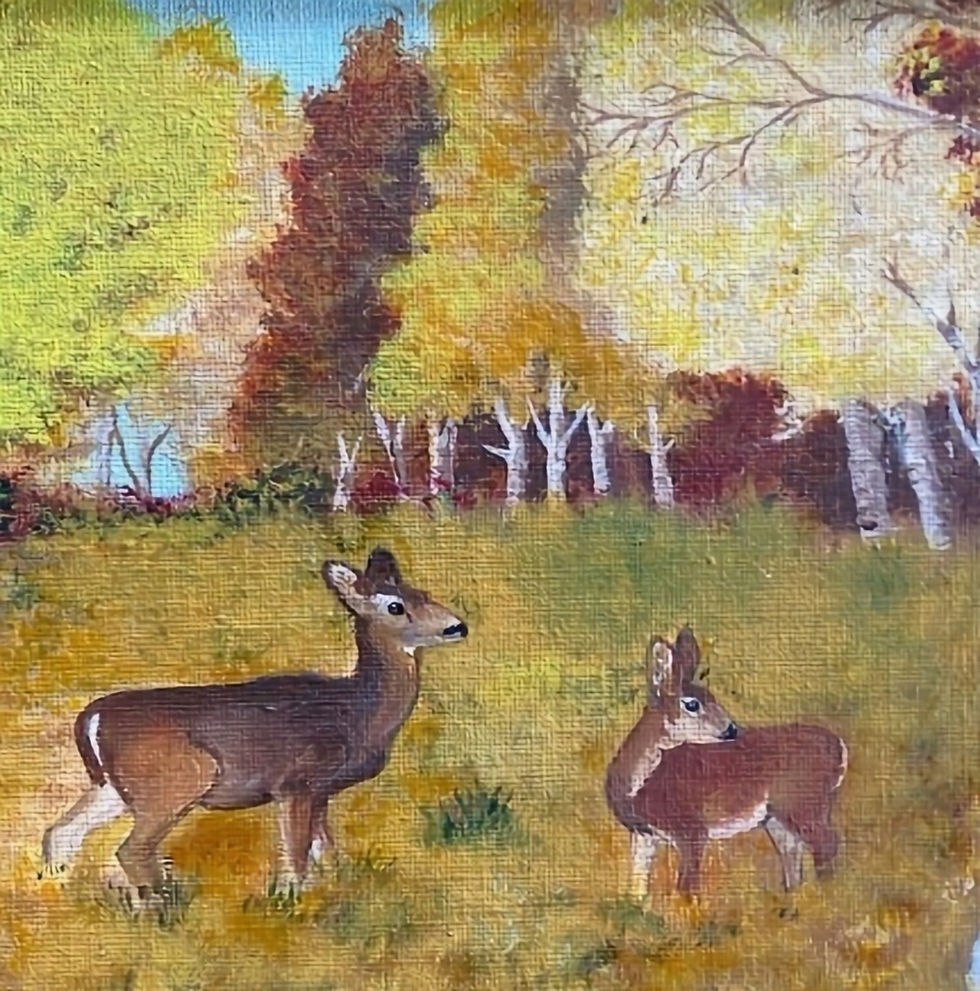Hedgerows and diversity
- darcygrahek

- Sep 22, 2019
- 2 min read
Hedgerows are habitats for pollinators and other wildlife. The difference between a hedge and a hedgerow is in the diversity of plant species. A hedge is one species planted in a row and maintained to form a fence, barrier or some type of delineation. A hedgerow incorporates multiple species of flowering shrubs, maybe small trees, other flora and maybe some sort of drainage or path that it borders. Blooms are available much of the year and the hedgerow offers overwintering habitat for many beneficial insect species. Using native species ensures the row will be low maintenance and highly familiar and useful to the pollinator, song bird or other wildlife species.
You might use riparian plants in a hedgerow. Riparian plants are defined as plants living on the bank of a river or other water body, including a seasonal wetland. The required elevation above the water level is very specific by species. Some native plants will tolerate months of wet “feet” while that condition is fatal to others. Here on the south coast, most of our riparian plants also tolerate a prolonged drought season. Some examples of riparian species, tolerating water over their roots, are Douglas spireae, Red Osier dogwood, Willow spp, and Juncus or rush. Maybe even just a foot further up in elevation, out of the flood zone might be crabapple, serviceberry, ninebark, red flowering currant, and with some shade, bleeding heart and ferns. Another foot higher and Evergreen Huckleberry, Oceanspray, Vine maple, Wax myrtle and Douglas iris would thrive. These plants have a wide range of tolerance so these elevations are suggested as to what the plants might prefer.
Establishing a hedgerow that does not get overcome by weeds requires elimination of what plants came before; particularly invasive species and grasses. Installing a hedgerow after laying underground utilities or after the ground has been scraped or laid bare for another reason, is probably the easiest time. Otherwise a lot of effort and time must be given to solarizing the ground or digging out unwanted plant species. After your chosen small trees and shrubs are installed, perennial flowers, bulbs, ferns and groundcovers can be added.
Assuming that you are using native plants, planting in Fall gives lots of time for plants to become established before the drought of summer. Those planted in Spring may require water over their first summer. The native plants have evolved to grow together as you would find in a thicket. Some plants fix nitrogen and each species seems to support the others in different ways. In their diversity, they provide a rich banquet of bloom, seed and shelter to the pollinators and other wildlife.





Ücretsiz Rastgele Görüntülü Sohbet Kameralı Sohbet Gabile Sohbet Canlı Sohbet Cinsel Sohbet Uygulaması.https://www.gevezeyeri.com/cinselsohbet.html
Ücretsiz Rastgele Chat Görüntülü Chat Kameralı Chat Gabile Chat Canlı Chat Cinsel Chat Uygulaması.https://www.gevezeyeri.com/gabilesohbet.html
https://indianwomenorg.com/read-blog/19053
https://sparktv.net/read-blog/53482
https://together-19.com/read-blog/70834
https://ourfamilylync.com/read-blog/25102
https://deutschekleidung.com/read-blog/16604
https://suomennbaseura.com/read-blog/10361
https://firstamendment.tv/read-blog/61542
https://divisionmidway.org/jobs/author/sohbetuygulamasi/
http://www.mizmiz.de/read-blog/54768
https://mylinks.ai/sohbetoadalari
https://www.pinterest.co.kr/chatodalari0357/
https://www.pinterest.co.uk/mobilsohbetodalari/
https://mx.pinterest.com/sevyelisohbet/
https://www.pinterest.de/sohbetsohbet0719/
https://www.pinterest.fr/chatsohbet0342/
https://www.pinterest.cl/ucretsizsohbet/
https://at.pinterest.com/istanbulsohbet/
https://taplink.cc/sohbetodalari
https://os.mbed.com/users/mobilsohbet/
https://eternagame.org/players/408511
https://www.ted.com/profiles/45248260
https://linkpop.com/canlisohbet
https://onne.link/sohbetodalari
https://teletype.in/@sohbetedin/sohbet
https://joy.link/sohbetedin
https://linkpop.com/canlisohbet
https://www.iglinks.io/sohbet-qgd?preview=true
https://flow.page/sohbetodalari
https://tr.linkedin.com/today/author/gevezeyeri?trk=article-ssr-frontend-pulse_more-articles
http://opensource.platon.sk/forum/projects/viewtopic.php?t=10945435
http://opensource.platon.sk/forum/projects/viewtopic.php?t=10945437
The Utah Jazz are removed against the NBA Playoffs. Prior to we shift into this year and what's in just retailer for Utah, we initially contain in the direction of idea our caps towards the Dallas Mavericks. Inside exactly over each individual element of basketball, the Mavericks outplayed the Jazz. In opposition to Jalen Brunson and Luka Doncic constantly cooking the Jazz in the direction of Maxi Kleber's remarkable capturing, Dallas performed with amazing poise, connectivity, and have faith in; all elements the Jazz lacked this time. It's a cliche, nonetheless Dallas seriously does participate in which include a properly oiled device. At the moment, the Jazz. Make it possible for's commence with unpacking the annoyance of this year. For…
The Orlando Magic misplaced their fourth-instantly video game Wednesday as they fell 130-109 in direction of their office-foes, the Atlanta Hawks. Led via All-Star secure Trae Youthful, who scored 22 facts inside 25 minutes, the Hawks outscored the Magic 72-53 all through the initial 2 quarters of the contest, and experienced components in just cruise handle for the chill out of the sport. Bogdan Bogdanovic additional 23 details off Atlanta's bench - inside merely 25 minutes upon the surface area. "Credit history them," Orlando Magic intellect prepare Jamahl Mosley advised reporters when the recreation. "They did a Terrific undertaking acquiring shooters, developing images, they're taking pictures 50-60 % within the initial 50 percent. Once more, Trae does these types o…